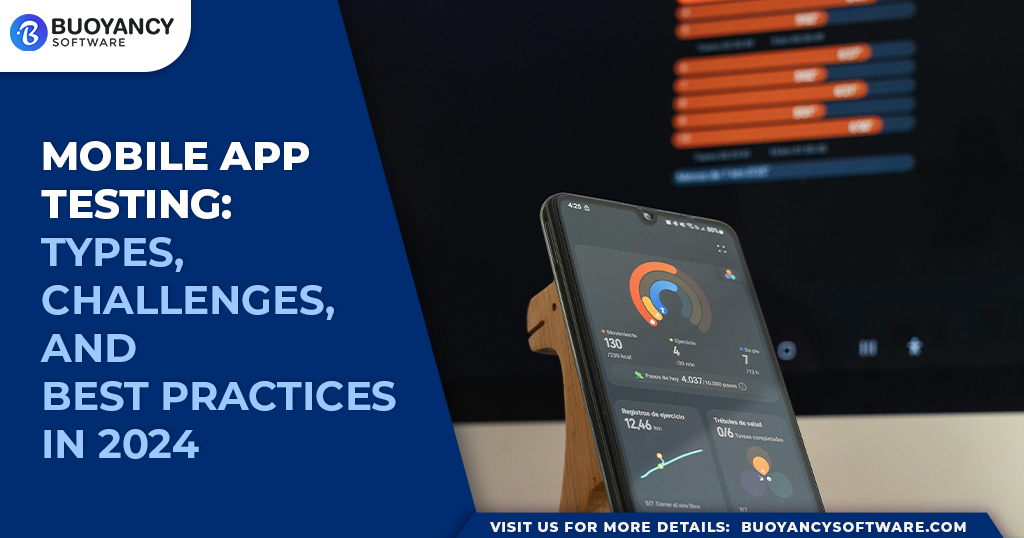Mobile apps have become an integral part of our lives, and businesses across industries like banking, education, and healthcare are increasingly relying on them to reach and engage with their customers. To ensure these apps function correctly and deliver a positive user experience, mobile app testing is essential. However, ensuring the quality and reliability of these apps is no small feat. In this blog post, we’ll delve into the world of mobile app testing, exploring its types, challenges, and best practices.
Real-World Example: The Costly Malfunction
Let us see what happens when there is no adequate testing done. Several companies have faced significant challenges due to mobile app failures. Here are a few examples:
British Airways: In 2017, a massive IT failure caused by a power supply issue led to the cancellation of flights globally, affecting 75,000 passengers and costing the company around £80 million.
Target: The retail giant’s ambitious attempt to launch a mobile app for holiday shopping in 2013 failed due to poor functionality and user experience, leading to customer frustration and lost sales during the critical holiday season.
Snapchat: In 2018, a redesign of the Snapchat app received significant backlash from users, including celebrities, which contributed to a decrease in user engagement and a substantial drop in the company’s stock value.
Ola: India’s largest taxi aggregator, Ola experienced major security flaws within their mobile app, which allowed basic programmers to exploit bugs and enjoy unlimited free rides. This not only led to financial losses for Ola but also compromised the trust of users. The issue became public when customers started to report the weaknesses in the system.
These instances highlight the importance of thorough testing, user-centric design, and robust IT infrastructure to prevent losses associated with mobile app issues. That is why robust app security and testing to prevent such vulnerabilities.
Types of Mobile App Testing
Mobile app testing is a comprehensive process that ensures an application’s functionality, usability, stability, performance, and security are up to the mark. Here’s an expanded overview of eight key types of mobile app testing:
Functional Testing: This foundational testing verifies that each function of the application operates in conformance with the requirement specification. Testers meticulously check every interaction within the app to ensure smooth operation according to the design.
Performance Testing: This testing assesses the app’s speed, responsiveness, and stability under various conditions. It includes load testing to measure performance under real-life load conditions, stress testing to evaluate limits, and scalability testing to determine the app’s growth potential.
Compatibility Testing: With the myriad of devices available, this testing ensures that the app provides a consistent experience across different hardware, operating systems, and screen sizes, maintaining functionality and aesthetics.
Usability Testing: This user-centric testing focuses on the app’s ease of use, clarity of content, and overall user experience. It aims to identify any barriers that could prevent a seamless interaction with the app.
Security Testing: As cyber threats escalate, this testing is crucial for identifying potential vulnerabilities that could compromise user data and privacy. It involves rigorous checks for data breaches, authentication protocols, and encryption standards.
Compliance Testing: This testing ensures that the app adheres to relevant legal and regulatory standards, such as GDPR for data protection or HIPAA for healthcare information, mitigating the risk of non-compliance penalties.
Interface Testing: This examines the graphical user interface for intuitiveness, consistency, and visual appeal. It ensures that elements like buttons, menus, and navigation contribute to a positive user experience.
Operational Testing: This evaluates the app’s operational aspects, such as backup and recovery processes, to ensure it can recover from failures and maintain data integrity in real-world scenarios.
Localization Testing: This type of testing checks the app’s adaptability to different languages and regional settings, ensuring that it meets the cultural and linguistic expectations of users worldwide.
Beta Testing: This is the final testing stage before the app’s official release, where real users test the app in a production environment. It provides valuable feedback on the app’s functionality and user experience in real-world conditions.
Each of these testing types plays a vital role in the development lifecycle of a mobile app, ensuring that it not only meets technical specifications but also delivers a secure, efficient, and enjoyable user experience.
Challenges Faced During Mobile App Testing
Mobile Application Quality Testing presents an array of intricate challenges that software developers and Quality Assurance (QA) teams must adeptly navigate to guarantee an optimal user experience. Below is the overview of these challenges:
User Interface and Usability: It is paramount to ensure that an application is not merely operational but also intuitive and user-centric. Subpar usability can significantly impede the adoption of the application, rendering exhaustive usability and exploratory assessments indispensable.
Energy Consumption Management: In an era where mobile devices are central to daily activities, applications must be meticulously optimized for energy efficiency. Elevated power consumption can precipitate the uninstallation of applications, hence, it is critical to perform testing across a spectrum of usage scenarios to ascertain energy efficiency.
Application Security: The escalation of security threats mandates stringent security evaluations during the application’s initial release phase. A robust security testing protocol must take into account the unique characteristics of the application, the features of the operating system it operates on, and the capabilities of the devices it will be used on.
Operating System Diversification: The heterogeneity of operating systems, especially within the Android and iOS ecosystems, necessitates comprehensive testing across all pertinent versions to ensure extensive compatibility.
Web Browser Compatibility: Evaluating an application’s interoperability with predominant mobile web browsers such as Chrome, Firefox, Opera, and Safari is crucial. This is particularly imperative for progressive web applications that are accessed predominantly through web browsers.
Integration with Third-party Services: The efficacy of third-party services integrated within the application must be rigorously verified, given the various dependencies they introduce into the application’s ecosystem.
Hardware Diversity: The plethora of mobile devices, each with distinct screen dimensions, configurations, and operating systems, presents a considerable challenge. Therefore, a thorough mobile application testing strategy is vital to achieve compatibility across diverse devices.
Evolving User Expectations: As consumer preferences and requirements evolve, applications may undergo enhancements and feature additions, which could introduce new defects. QA teams are obligated to remain abreast of each update and conduct extensive mobile application regression testing.
By meticulously understanding and proactively addressing these challenges, software developers and QA teams can institute efficacious mobile application testing methodologies that significantly elevate the application’s quality and performance.
Best Practices for Mobile App Testing in 2024
Let’s delve into the best practices for mobile app testing in more detail:
Define the Scope of Testing:
Before embarking on testing, it’s crucial to outline the scope. Clearly define which aspects of the app will be tested. Consider the app’s functionalities, user flows, and target audience. This ensures that testing efforts are focused and comprehensive.
Cross-Platform Testing:
Mobile apps run on various devices (smartphones, tablets) and operating systems (iOS, Android). Conduct cross-platform testing to verify that your app functions correctly across different environments. Test on a variety of devices, screen sizes, and OS versions.
Test App Permissions:
App permissions are essential for user privacy and security. Verify that your app requests only the necessary permissions. Unnecessary permissions can raise privacy concerns and impact user trust. Test scenarios where permissions are requested and granted or denied.
Connectivity Testing:
Mobile apps often rely on network connectivity. Test how your app performs under different network conditions:
- Wi-Fi: Ensure smooth functionality when connected to Wi-Fi.
- Cellular Data: Test app behavior on 3G, 4G, or 5G networks.
- Offline Mode: Check if the app gracefully handles offline scenarios.
Automate Repetitive Tasks:
Manual testing is time-consuming and error-prone. Automate repetitive tasks using testing frameworks and tools. Automation saves time, increases test coverage, and improves consistency.
Use a Well-Defined Testing Process:
Establish a structured testing process:
- Test Planning: Define test objectives, scope, and resources.
- Test Design: Create test cases, scenarios, and data.
- Test Execution: Run tests and log defects.
- Test Reporting: Document results and track progress.
- Regression Testing: Continuously validate app updates.
- User Acceptance Testing (UAT): Involve real users to validate app usability.
Remember that thorough testing contributes to a robust and reliable mobile app. By following these best practices, you’ll enhance the quality of your app and provide a seamless experience for users.
Buoyancy Software, with its experienced staff, can be your partner in the process of mobile app testing. From functional validation to security checks, they ease the pain of testing, ensuring high-quality apps. Whether it’s compatibility or performance, Buoyancy Software has you covered.
In conclusion, robust mobile app testing is non-negotiable. Embrace best practices, learn from real-world examples, and partner with experts like Buoyancy Software to deliver flawless mobile experiences to your users.
Remember, a well-tested app is a happy user!



